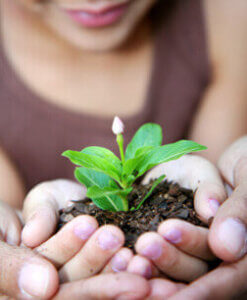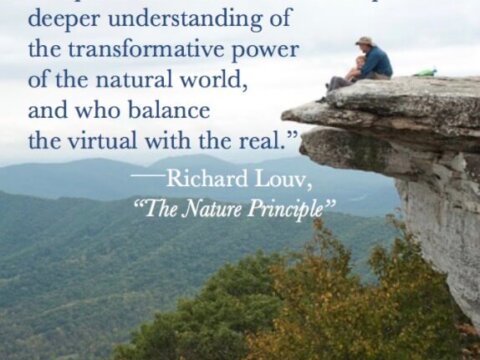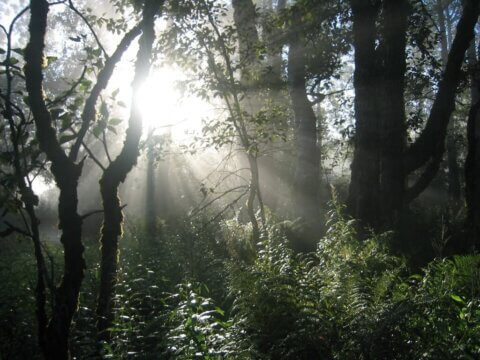NATURE’S OWN STIMULUS PACKAGE: 7 Ways to Improve Our Lives in Tough Economic Times
For many stressed-out families, spending more time in the natural world — a nature stimulus package — may be just what the doctor and the economist ordered. Here are a few of the benefits, updated from an earlier post:
 With high gas prices, families are rediscovering both the joy and the cost-effectiveness of getaways in nearby nature, including regional, state or national parks. As Outside magazine puts it, “near is the new far.”
With high gas prices, families are rediscovering both the joy and the cost-effectiveness of getaways in nearby nature, including regional, state or national parks. As Outside magazine puts it, “near is the new far.”- Unless we’re talking about a new bass boat or a high-tech tent, nature toys are free or cheap, and they encourage self-directed creativity. In 2008, the National Toy Hall of Fame in Rochester, N.Y., inducted the stick, which it called not only possibly the oldest toy, but “possibly the best.”
- Green exercise is free. In the United Kingdom, and now in the United States, families are eschewing commercial indoor gyms. Groups of families form ” green gyms” and meet once or twice a week to hike, garden or take some other type of exercise in the natural world.
Research suggests that green exercise may be better at improving a number of health indicators — including blood pressure and mental acuity — than the same amount of energy expended in an indoor gym.
- By planting trees and preserving open space, we can improve energy efficiency, reduce the carbon footprint and protect property values. Studies by the Trust for Public Land show that adjacent parks and nature trails are consistently associated with higher home resale values. One recent study shows that, even in inner cities, the greener the neighborhood, the lower the rate of obesity. Playgrounds with more trees generally have lower crime rates.
- Back-yard or community gardens offer improved nutrition and, for the wider society, reduced long-distance shipping costs.
- To shorten the recession, we’ll need to teach better and work smarter. Students learn better when schools promote place-based learning in the largest classroom of all: the natural world. In Scandinavian countries, where “all-weather” schools require students to spend time outside every day, kids get fewer colds and flu. And outdoor classrooms cost less than brick and mortar.
- Nature also can help us build social capital. In hard times, we need cohesive neighborhoods and supportive kinship networks more than ever. The family that plays outside together stays together. In the U.S., parents are forming family nature clubs; at almost no cost, these clubs are changing lives.
True, nature’s no panacea. Reducing our society’s nature-deficit disorder can’t pay the mortgage or immediately replace a lost job, but doing so could help reduce stress, and improve our health and our sanity.
So it’s time to reduce the nature deficit.
We’re seeing some progress. A growing national network of thousands of individuals, families and organizations is building a movement to leave no child inside. Families are partnering with other families. In North America, more than 90 regional and statewide campaigns to get kids outside have emerged.
To create these campaigns, educators, health care professionals, conservationists, kids, college students, government officials and businesspeople are joining forces — sometimes out of economic self-interest. They’re also acting from their heart. Future generations should have the right to a walk in the woods, and so should we.
The investment in the children and nature movement won’t put our grandkids in debt. And, especially in a recession, the dividends will be priceless.
-
Network News
Earth Day: Young leaders advocate for change
-
Feature
Nature photographer Dudley Edmondson has a vision for the representation of Black and Brown faces in the outdoors
-
Richard Louv
EARTH MONTH: You're part of the New Nature Movement if....
-
Voices
Placemaking: How to build kinship and inclusive park spaces for children with disabilities
-
Network News
Children & Nature Network founders release report on global factors influencing the children and nature movement







Commentaries on the C&NN website are offered to share diverse points-of-view from the global children and nature movement and to encourage new thinking and debate. The views and opinions expressed are those of the author(s) and do not necessarily reflect the position of C&NN. C&NN does not officially endorse every statement, report or product mentioned.